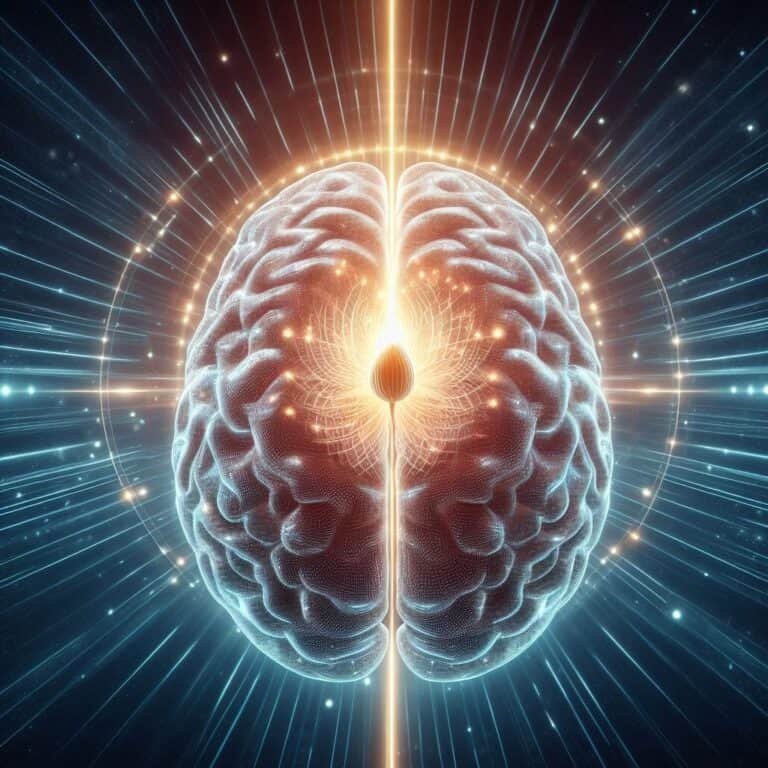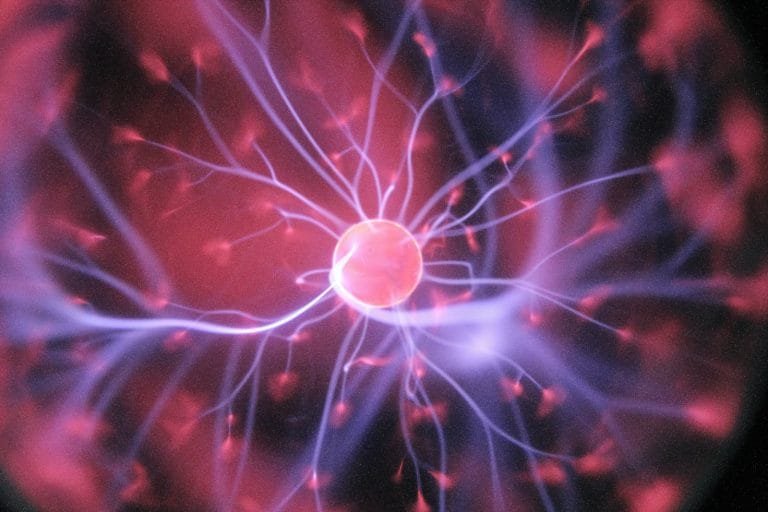Underactive Pineal Gland Symptoms & Signs Explained

Wellness Fixation is reader supported, meaning I may earn a small commission if you purchase something through my links at no extra cost to you. Thanks for your support! Learn more
Summary
- Insomnia and disrupted sleep patterns can be caused by an underactive pineal gland.
- Emotional disturbances and mood swings may be indicative of issues with the pineal gland.
- Daytime fatigue and excessive sleepiness are common symptoms.
- Calcification of the pineal gland is a significant risk factor.
- Pineal gland health can be supported by natural remedies and lifestyle changes.
What Does the Pineal Gland Do in Your Body?
Despite its small size, the pineal gland plays a significant role in your body’s function. This small, pea-sized gland, located deep within the brain, influences various physiological processes. Its main function is to produce melatonin, a hormone that regulates your sleep-wake cycle. When the pineal gland is underactive, it can cause a variety of health problems, including disruptions to your sleep and mood.
Where is the Pineal Gland and What Does it Do?
The pineal gland is situated nearly in the middle of the brain, nestled between the two hemispheres. It’s conveniently located in a tiny groove where the two halves of the thalamus meet. This positioning is no accident, as it enables the gland to gather information about light exposure straight from your eyes. The primary function of the gland is to produce melatonin, which it releases when it’s dark, telling your body that it’s time to hit the hay.
- Responsible for the production of melatonin which aids in the regulation of sleep.
- Assists in the maintenance of circadian rhythms.
- Potentially influences both reproductive hormones and mood.
In addition to sleep regulation, the pineal gland may also be involved in other body functions. There are some studies that suggest it has a role in the regulation of reproductive hormones and mood stabilization. However, these roles are still being studied and further research is needed to fully understand an underactive pineal gland.
.
How Melatonin Helps Regulate Sleep
Often referred to as the “sleep hormone”, melatonin plays a crucial role in managing your sleep-wake cycles, or circadian rhythms. As the day turns into night, your pineal gland increases its production of melatonin, signaling to your body that it’s time to relax and get ready for sleep. When the morning light shines into your eyes, your melatonin production slows down, assisting you in waking up feeling rested.
So, what’s the result if an underactive pineal gland isn’t making enough melatonin? You may struggle to fall asleep or stay asleep, which can result in insomnia and other sleep issues. That’s why it’s so important to keep your pineal gland healthy for a good night’s sleep.

Links to Sleep Cycles and Hormone Levels
Our bodies have an internal clock, known as circadian rhythms, that control our sleep-wake cycle and reset about every 24 hours. The pineal gland helps regulate this cycle by producing melatonin. If you have an underactive pineal gland, it can disrupt this balance, causing sleep problems and even impacting your hormone balance. Learn more about the pineal gland’s role in sleep.
Aside from sleep, melatonin plays a role in determining when puberty begins and also aids in cell protection. It is also thought to have antioxidant properties, which means it fights against damaging free radicals in the body. Therefore, an imbalance in melatonin levels caused by an underactive pineal gland can have effects that extend far beyond just sleep.
Typical Signs of an Underactive Pineal Gland
It’s important to know the symptoms of an underactive pineal gland so you can take steps to combat the problem. Here are some typical signs to look for:
Problems with Sleep and Insomnia
If you’re having a hard time getting a good night’s sleep, your pineal gland might be underperforming. You could be dealing with insomnia, a condition that makes it hard for you to fall asleep or stay asleep. When your pineal gland isn’t producing enough melatonin, your body’s sleep signals get thrown off. This can leave you wide awake in the middle of the night and feeling tired and cranky during the day.
Emotional Fluctuations and Mood Disturbances
In addition to sleep disturbances, a sluggish pineal gland can also impact your mood. You might experience unpredictable mood changes, heightened irritability, or even signs of depression. This is due to the fact that melatonin affects brain neurotransmitters that regulate mood. Thus, when melatonin levels are not balanced, your emotions may also be unbalanced.
Feeling Tired and Sleepy during the Day
Insufficient melatonin to regulate your sleep can cause you to feel overly tired during the day. It’s typical for those with an underactive pineal gland to experience daytime sleepiness. This fatigue can interfere with your focus, efficiency, and overall life quality. It’s like trying to function under a perpetual cloud, making even the simplest tasks seem daunting.
Recognizing these signs can help you detect problems with your pineal gland at an early stage. This can allow you to take measures to naturally enhance your sleep and mood.
What Causes This Condition?
Now that we’ve covered the symptoms, let’s look at what can lead to an underactive pineal gland. There are many things that can cause it to not work properly, from just getting older to the way you live your life.
Calcification and Growing Older
The main reason why the pineal gland becomes underactive is due to calcification. As we grow older, calcium deposits may accumulate in the gland, thereby reducing its capacity to generate melatonin. This phenomenon, known as calcification, is quite frequent and tends to become more prevalent as we age. However, it may also happen in younger people, resulting in early onset of pineal gland dysfunction.
Although we can’t avoid getting older, there are methods to slow down the calcification process and keep our pineal gland healthier. Making changes to our diet, reducing our exposure to toxins, and adding certain supplements can have a big impact.

The Role of Toxins
Environmental toxins can play a significant role in the function of the pineal gland. Fluoride, which is often found in our water supply, is frequently mentioned as a substance that can cause the gland to calcify. Other environmental toxins, such as pesticides and heavy metals, can also disrupt the gland’s ability to produce melatonin. As such, it’s important to limit exposure to these toxins to keep the pineal gland healthy.
It’s a good idea to use a water filter that removes fluoride and other pollutants to limit your exposure to toxins. Choosing organic fruits and vegetables and avoiding pesticides can also help to decrease the amount of toxins your body has to deal with. You should also be aware of the products you use in your home and on your body, and try to use natural alternatives whenever you can.
Family History
Genetics can also influence the health of your pineal gland. Some individuals may be genetically predisposed to calcification or other dysfunctions of the pineal gland. While you can’t alter your genetics, knowing your family’s medical history can assist you in taking preventative steps. If you are aware that issues with the pineal gland are common in your family, you may want to be more proactive in maintaining your gland’s health through diet, supplements, and lifestyle modifications.
Identifying the Problem
If you think you might be suffering from an underactive pineal gland, the first thing you should do is consult with a medical professional. They can help you figure out whether your symptoms are due to a problem with your pineal gland or if they’re being caused by something else.
Doctors and Their Methods
If you go to a doctor, they will probably begin with a complete medical history and physical examination. They may ask about your sleep patterns, mood changes, and any other symptoms you’re experiencing. Depending on this information, they may suggest certain tests to check your pineal gland function.
A typical diagnostic procedure is a blood test to check the amount of melatonin in your body. This can help establish if your pineal gland is creating the right quantity of the hormone. In certain circumstances, a healthcare provider might recommend a sleep study to evaluate your sleep patterns and pinpoint any hidden sleep disorders.
The Importance of Imaging Tests
Imaging tests like MRI or CT scans can give a detailed look at your pineal gland and can help find any calcifications or abnormalities. These tests are non-invasive and can give a lot of information about the health of the gland. If there is calcification, it could mean that the gland is not working as well as it should, which could help guide treatment options.
Even though imaging tests can be useful, they’re not always essential for diagnosing problems with the pineal gland. Your doctor will decide the best course of action based on your symptoms and medical history. It’s crucial to talk about any worries you have with your healthcare provider and collaborate to find the most suitable diagnostic approach.
How to Treat and Manage an Underactive Pineal Gland
If you’ve discovered that your pineal gland is underactive, you might be wondering what you can do to treat it. Luckily, there are several ways to boost your gland’s function and improve your health in general. These methods range from medications and supplements to lifestyle modifications and dietary changes.
Prescriptions and Over-the-Counter Options
In certain situations, a medical professional may suggest prescriptions to assist in controlling symptoms associated with an underactive pineal gland. For instance, supplements of melatonin can be helpful in enhancing sleep quality and managing circadian rhythms. These supplements are usually safe when taken as instructed, but it’s critical to speak with a healthcare provider before beginning any new supplement routine.
Vitamin D, magnesium, and antioxidants such as vitamin E and C are other supplements that could be beneficial to the health of the pineal gland. These nutrients have the potential to reduce inflammation and improve the overall health of the brain. However, it is important to discuss any supplements with your healthcare provider to ensure that they are suitable for your individual needs.
How to Promote Pineal Health Through Lifestyle Changes
One of the best ways to take care of your pineal gland is by living a healthy lifestyle. This includes getting regular exercise, managing your stress, and making sure you get enough sleep. Exercise is especially helpful because it can help balance your hormones and improve the quality of your sleep, which is good for your pineal gland.
What to Eat and What to Avoid
Your diet can make a big difference in the health of your pineal gland. You should aim to eat a balanced diet that is full of whole foods. This includes fruits, vegetables, whole grains, and lean proteins. These foods are full of nutrients that your body needs to stay healthy. They can also help to reduce inflammation in your body.

Furthermore, you should also include foods in your diet that are rich in antioxidants like berries, nuts, and green leafy vegetables. These foods can help fight oxidative stress and promote brain health. It is also important to limit your intake of processed foods, sugar, and unhealthy fats to keep your gland function at its best.
How to Improve Your Sleep Hygiene
Having good sleep hygiene is key to supporting your pineal gland and enhancing the quality of your sleep. Here are some strategies to help you develop a good sleep routine:
- Establish a regular sleep pattern by sleeping and waking at the same times each day.
- Develop a calming pre-bed routine to tell your body it’s time to relax.
- Reduce exposure to screens and blue light at least an hour before sleeping.
- Maintain a cool, dark, and quiet bedroom to encourage deep sleep.
- Steer clear of caffeine and heavy meals near bedtime.
These techniques can help support your pineal gland and boost your overall health. However, it’s important to remember to work with a healthcare professional to create a plan that’s tailored to your specific needs.
Possible Problems and Associated Issues
Without proper treatment, an underactive pineal gland can cause a variety of problems and related issues. Being aware of these risks can enable you to take preventative measures to safeguard your health.
A possible problem that could arise is the occurrence of sleep problems, like insomnia or sleep apnea. These disorders can greatly affect your lifestyle and can raise the chances of experiencing other health problems, such as heart disease and depression.
Furthermore, if a pineal gland malfunction is left untreated, it can lead to chronic fatigue and mood swings. These symptoms can interfere with your day-to-day life and overall health. That’s why it’s so important to deal with any pineal gland problems as soon as possible and get the right treatment.
- You may be more likely to suffer from sleep disorders and related health problems.
- You could experience chronic fatigue and mood swings.
- It’s crucial to get help and treatment early on.
If you know about these possible problems, you can do something to help your pineal gland and keep your health at its best.
Problems with the Pineal Gland
- Interrupted sleep-wake cycles
- Unbalanced hormones
- Higher chance of mood disorders
- Possibility of chronic fatigue
When the pineal gland isn’t working properly, it often throws off the body’s natural rhythms. This can lead to sleep problems like insomnia or irregular sleep patterns, which makes it hard for people to keep a regular sleep schedule. The gland is also responsible for regulating melatonin production, so any problems with it can lead to hormonal imbalances that affect a variety of body functions.
In addition to disrupting sleep, disorders of the pineal gland can also increase the likelihood of developing mood disorders. This is due to the fact that melatonin, which is regulated by the pineal gland, has an effect on the neurotransmitters that control mood. If there is an imbalance, it can result in mood swings, irritability, and depression.
Another symptom of a pineal gland disorder is chronic fatigue. This can greatly affect a person’s daily life, making it difficult to focus, stay productive, or even carry out daily tasks. It’s crucial to tackle these symptoms as soon as possible to avoid long-term health problems.
Health Risks Over Time
Over time, if a disorder of the pineal gland isn’t treated, it can lead to more serious health problems. Issues like chronic sleep deprivation and hormonal imbalances can raise the risk of heart disease, metabolic disorders, and mental health conditions. That’s why it’s so important to catch and treat any signs of a problem with the pineal gland early on, to avoid these health risks down the line.
Final Thoughts: The Necessity of Medical Consultation
Understanding the signs of an underactive pineal gland is the initial move towards boosting your health and wellness. If you think you might be dealing with a pineal gland issue, it’s crucial to consult with a healthcare professional as soon as possible. They can assist in identifying the problem and suggesting suitable treatment methods. By being proactive, you can aid your pineal gland, better your sleep, and improve your life in general.
Common Queries
Here are some popular questions about the pineal gland and what it does.
What does the pineal gland do?
The pineal gland’s main job is to make melatonin. Melatonin is a hormone that helps your body know when it’s time to sleep and wake up. Normally, your body makes more melatonin at night. Levels usually start to go up in the evening once the sun sets. They drop in the morning when the sun goes up. The amount of light you get each day — plus your own body clock — set how much melatonin your body makes. Aside from helping you sleep, melatonin may also help stabilize your mood and regulate your sex hormones.
What happens to your sleep when your pineal gland is underactive?
When your pineal gland is underactive, it doesn’t produce enough melatonin. This can lead to sleep problems like insomnia or inconsistent sleep patterns. Without the right amount of melatonin, your body has a hard time keeping up with its natural sleep-wake cycle, which can make it hard to fall asleep or stay asleep all night.
Is it possible to boost the performance of the pineal gland with lifestyle modifications?
Indeed, lifestyle modifications can have a profound effect on the functioning of the pineal gland. By eating a balanced diet, managing stress, getting regular exercise, and practicing good sleep hygiene, you can support your pineal gland and increase the production of melatonin. These changes can help normalize your sleep patterns and improve your overall health.
Can you test for pineal gland problems?
Indeed, there are a number of tests that can be used to identify problems with the pineal gland. Blood tests can be used to measure the levels of melatonin in the body, and imaging tests like MRIs or CT scans can be used to identify any calcifications or abnormalities in the gland. A sleep study might also be recommended to assess the quality of your sleep and identify any underlying disorders.
- Checking melatonin levels through blood tests
- Looking for gland calcification through imaging tests
- Assessing sleep patterns through sleep studies
With these tests, along with a comprehensive medical history and examination, healthcare professionals can accurately diagnose disorders of the pineal gland.
How can you prevent or minimize calcification of the pineal gland?
To prevent or minimize calcification of the pineal gland, try to limit exposure to environmental toxins like fluoride and pesticides. You can use a water filter to remove impurities and choose organic fruits and vegetables when you can. Also, eating a healthy diet that is high in antioxidants and essential nutrients can help guard the gland from calcification.
Can melatonin supplements help with symptoms?
Generally, melatonin supplements are thought to be safe for managing symptoms of an underactive pineal gland, like sleep problems. But it’s crucial to talk to a healthcare provider before starting any new supplements. They can help figure out the right dose and make sure melatonin supplements are safe and will work for your particular needs.
The pineal gland is a small endocrine gland located in the brain, responsible for producing melatonin, which regulates sleep patterns. An underactive pineal gland can lead to various symptoms such as disrupted sleep, mood disorders, and fatigue. Understanding the function of the pineal gland is crucial for recognizing these symptoms and seeking appropriate treatment.






